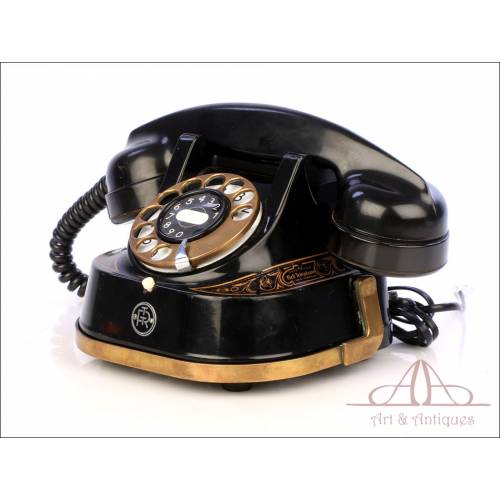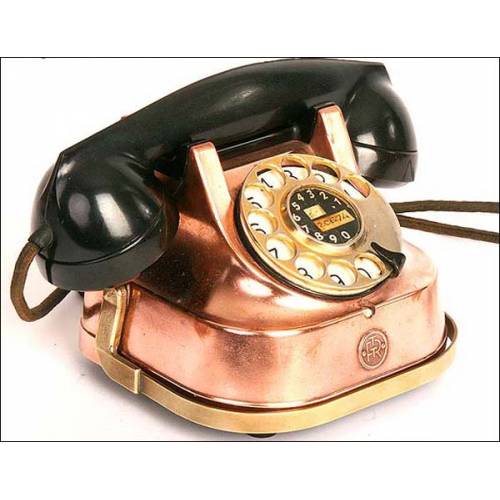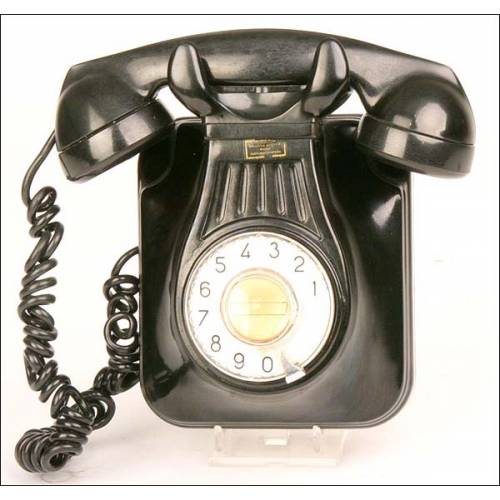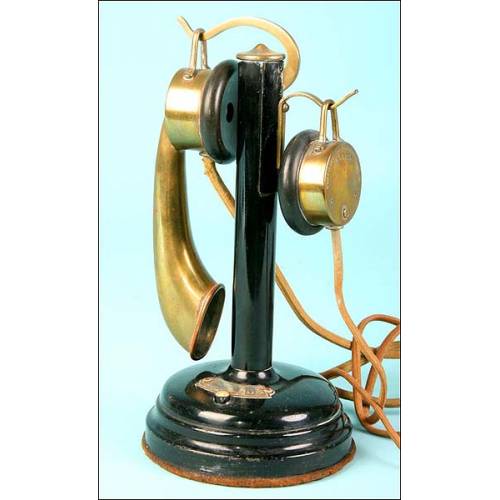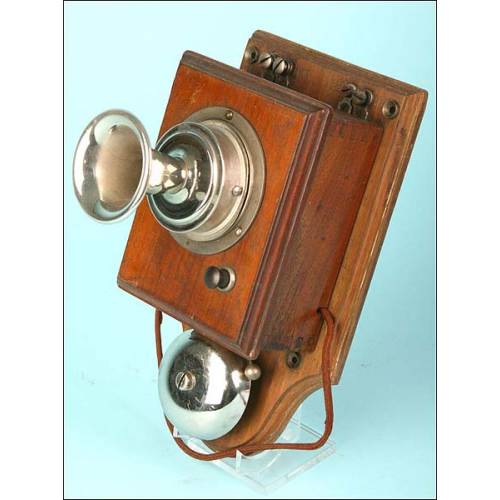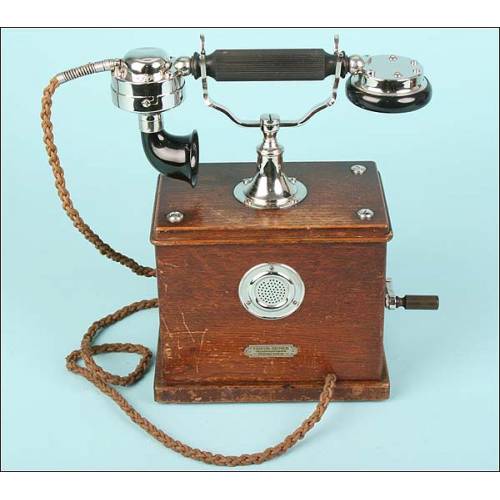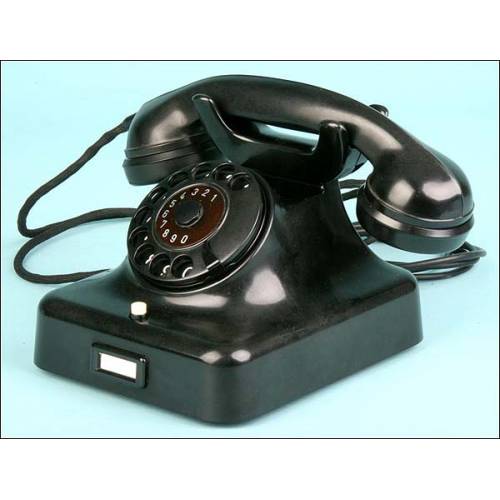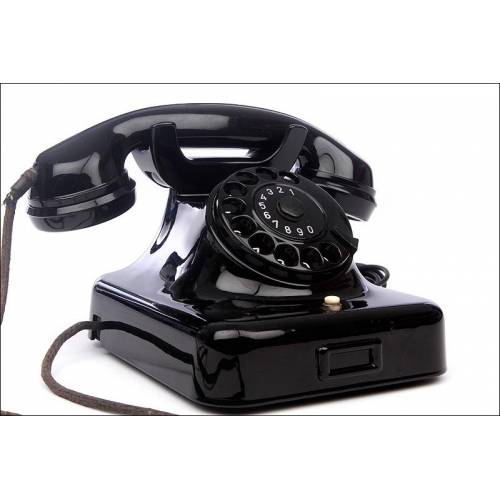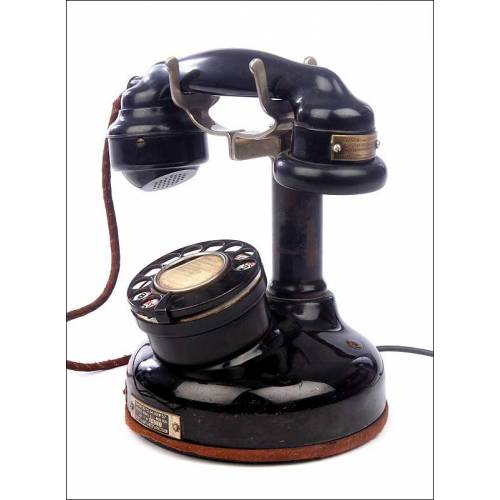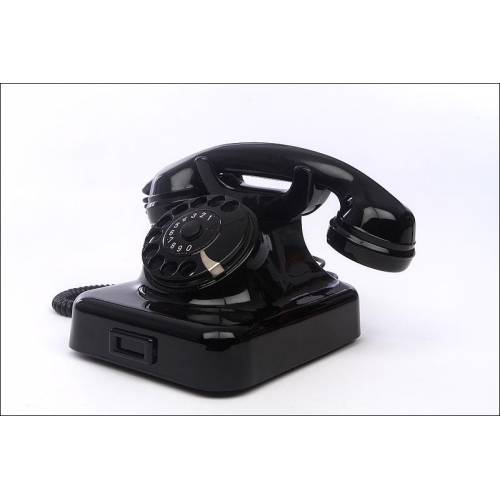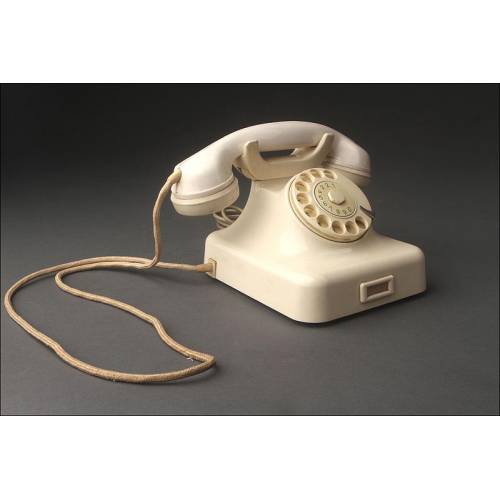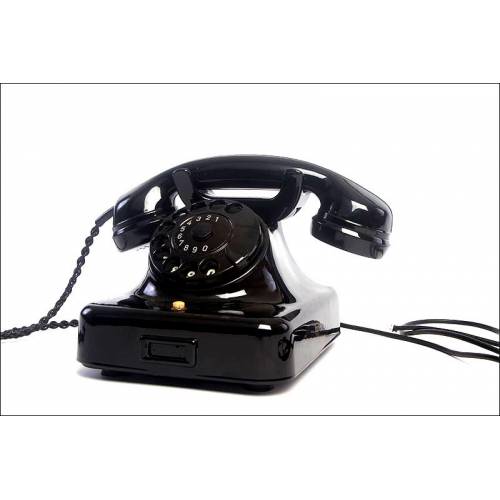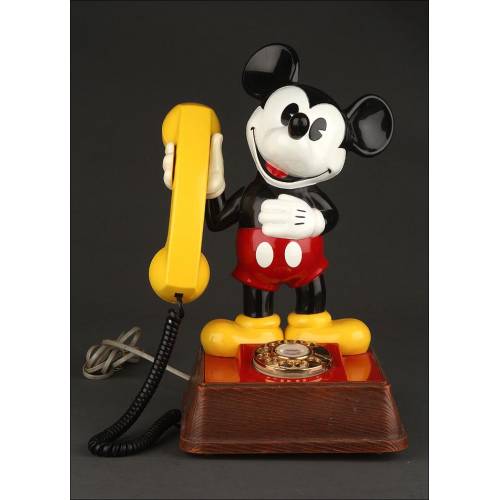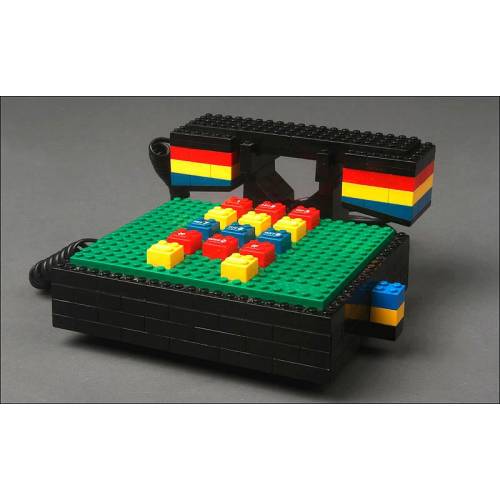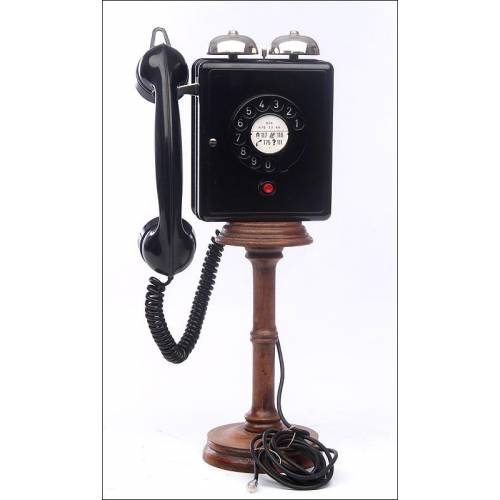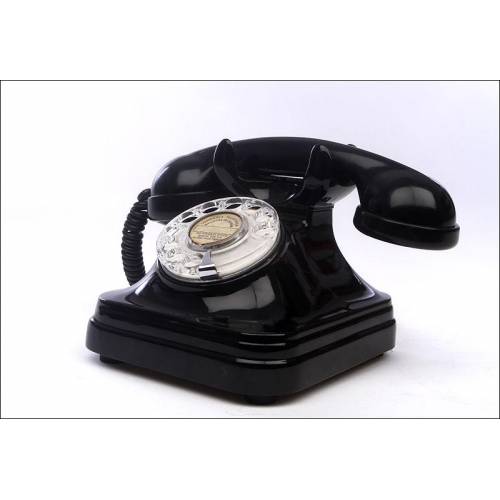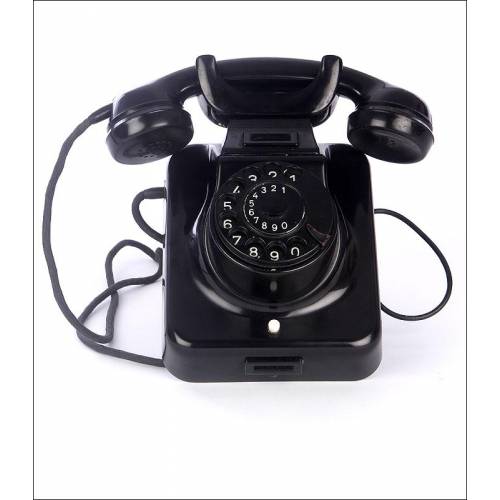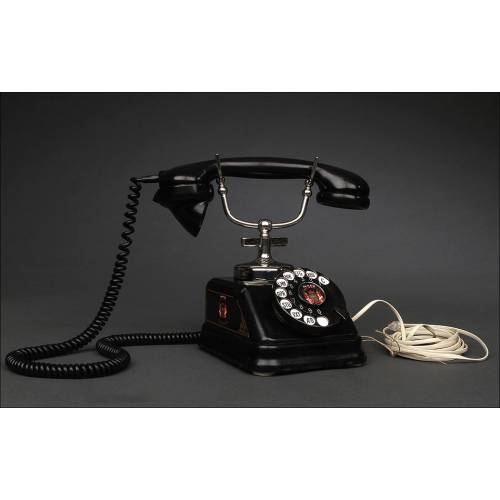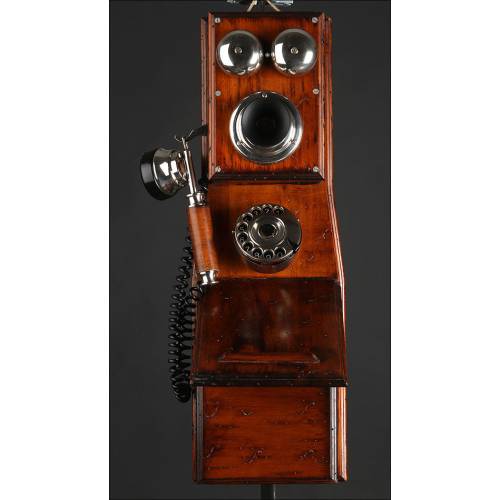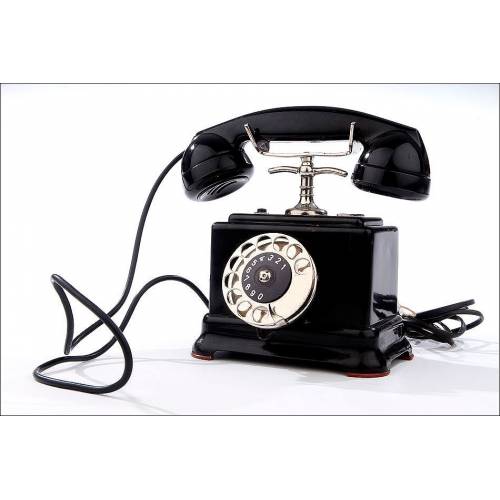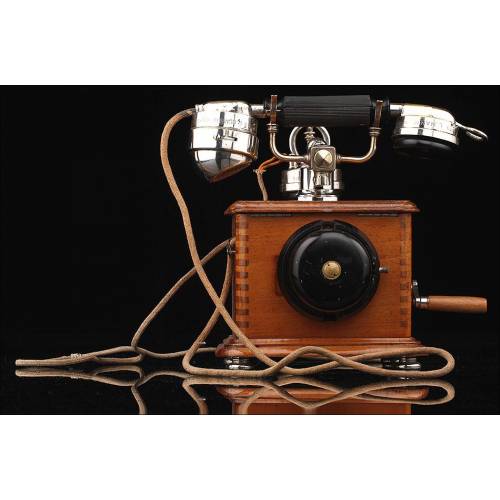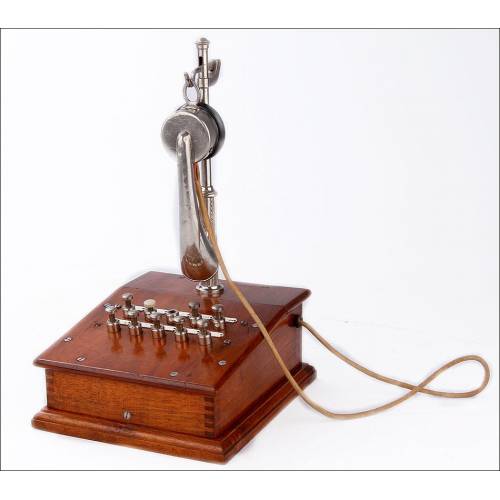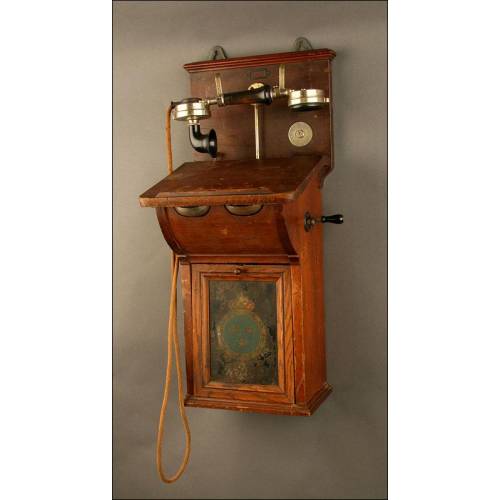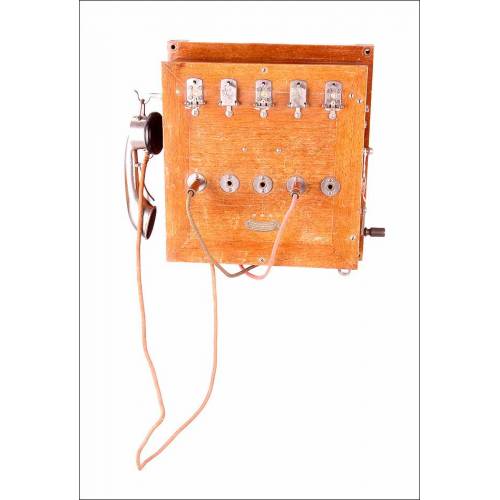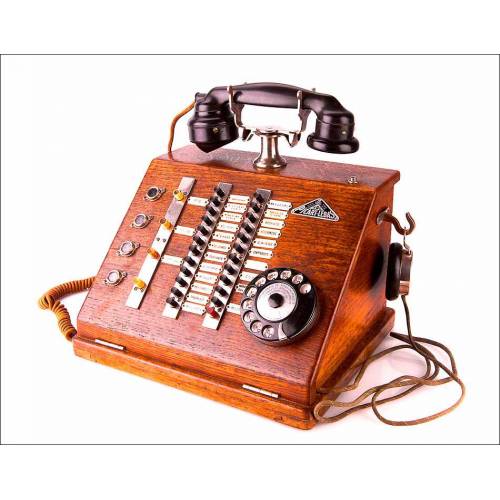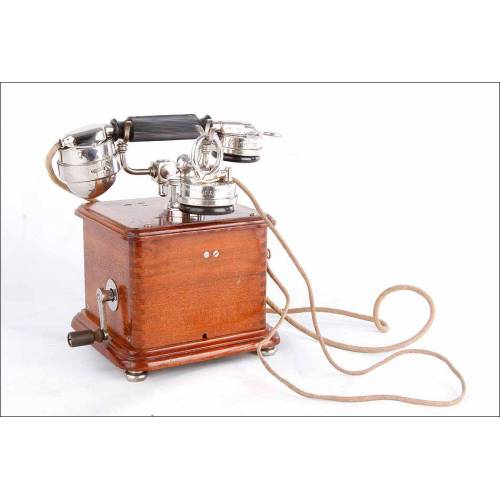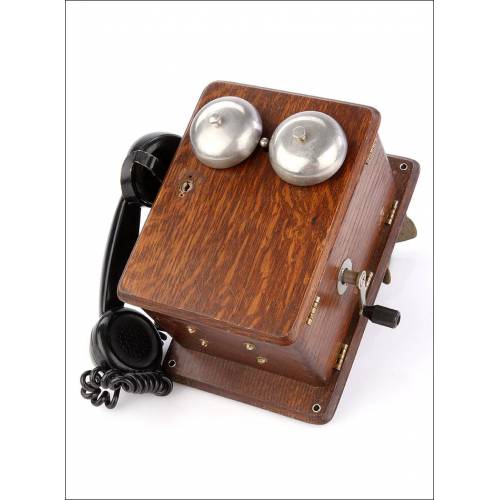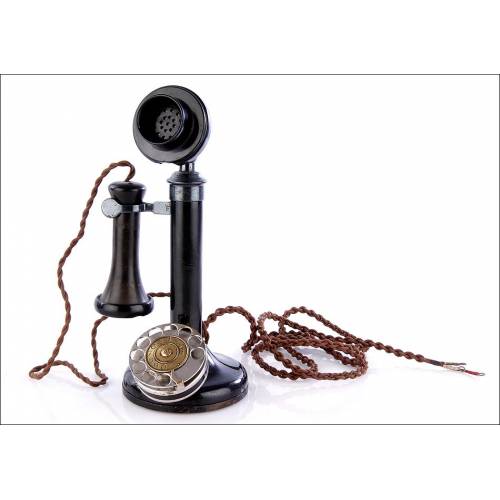C-921
Antique Belgian Bell Metal Telephone. Working. Belgium, 1930's
Beautiful Bell telephone with black enameled metal body. Original golden decoration. In working condition.
Sold!
Antique Belgian Bell metal telephone made in the 1930s and in working order. This gorgeous telephone is a very singular piece for its attractive design; it can also be used to receive telephone calls through analogue lines (not digital) with Spanish connection system. The telephone remains in amazing condition; the body is made of black-enameled metal and gold painted decoration and inscriptions, all greatly preserved. In includes a brass handle to carry the phone when talking. The black bakelite handset is in good condition too and so are the wiring and the brass dial. The golden decoration includes the name of the manufacturing company, Bell Telepone MFG Company, adorned by beautiful decorative volutes that enhance the telephones great look. At the items base we can see a printed white reference: RTT-56 A. If we connect the telephone to the line and to the electrical grid, it will ring when somebody makes a phone call to the corresponding number. The dialer is in working order but it does not ring the right number, so this item can be used to receive calls and talk to the interlocutor but not to make phone calls. Nevertheless, its amazing look and authenticity turn it into an exclusive and charming piece with a remarkable decorative power. This striking antique Belgian Bell metal telephone will surely stand out in a house with a stylish and personal decoration.Bell Telephone Company History The International Belle Telephone Company was founded in 1879 by Gardiner Hubbard, father-in-law of Alexander Graham Bell. The firm was created to promote the sales of the Bell Telephone Company in the European market. During his tour through Europe, Hubbard was offered good financial incentives by the Belgian government to establish the subsidiary companys headquarters in their country. The IBTC kept growing and became a holding with different services and product division. The greatest production was assumed by the Bell Telephone Manufacturing Company (BTMC), founded in 1882. This branch would be soon acquired by the Western Electric, which in turn would be bought by the American Bell Telephone Company; this wat, the IBTC was again part of the Bell Corporation. In the late 1899 and just for business purposes, the ABTC was bought by its own subsidiary, the AT&T, which would become the head of the Bell System monopoly.












